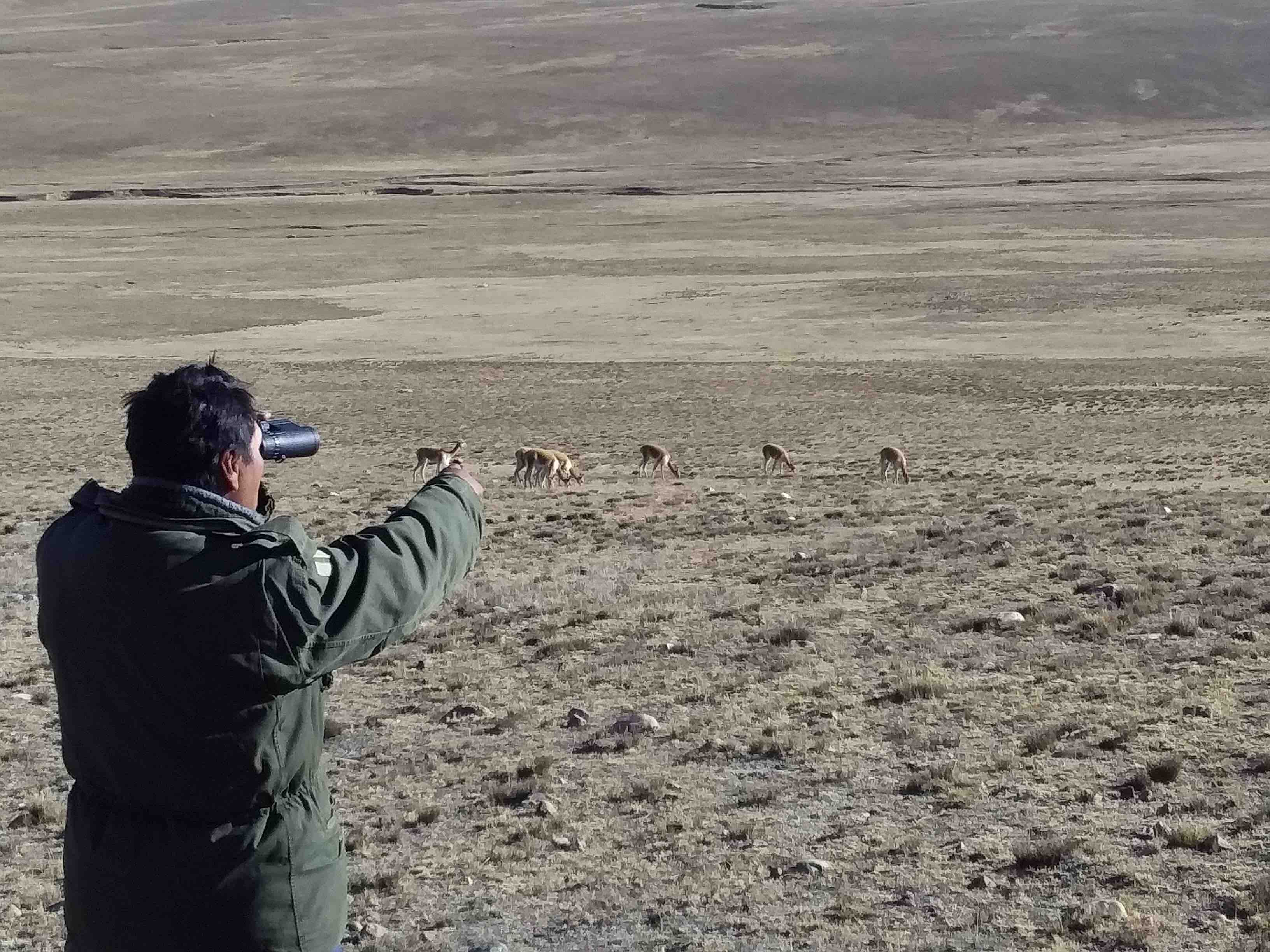The 2021 vicuña census, conducted in the Apolobamba National Integrated Management Natural Area (ANMIN) between August 16 and 17, reflected a 9% growth rate in the vicuña population compared to 2019, the year of the last census. These results reflect a greater commitment of the communities to the conservation and protection of the species.

Foto: Robert Wallace/WCS
“There is more commitment, added to the effort of the park rangers, and the fact that in the pandemic there was less impact of human activities, due to restrictions on the movement of people”, explains HumberAlberto, who is the WCS staff responsible for capacity building in the integrated use and monitoring of the vicuña in Apolobamba.
The objective of the activity is to determine the size, composition and distribution of the vicuña population and identify potential areas for harvesting where there are larger populations. It also evaluates whether the populations have grown or are declining, in relation to the protection efforts made by the communities and park rangers, says Alberto.
In this last census, with the participation of 18 management communities, organized in the Regional Association of Vicuña Management Communities of Apolobamba (ARCMVA), and park rangers from ANMIN Apolobamba, 13,692 individuals were registered throughout the vicuña distribution zone, in 8 census zones.

Foto: Humber Alberto/WCS
Regarding the composition of the vicuña population, the census shows that 59% are territorial family groups, which do not move from a specific area; 39% are herds of males, juveniles, who do not have a defined territory; 1% are solitary, which are generally sick or old animals; and 1% are called undifferentiated, which means that it has not been possible to establish with certainty which group they belong to. Other relevant data collected in the family groups included vicuñas that are mothers (61%), offspring (24%) and breeding males (15%); an average of 1 male for every 4 females was also identified.
A total of 99 people participated in this activity, 94 men and 5 women, including 28 park rangers and 9 people from technical support institutions. The remaining 62 people (63%) belonged to the communities, both community guards and authorities. The entire group was previously trained in July for the proper development of the activity.
"To carry out the census, we organized census brigades made up of a driver, a guide, a recorder and an observer," says Alberto.
The vicuña census and the entire management of the species is supervised at the national level by the General Directorate of Biodiversity and Protected Areas. Since this is a protected area, the National Protected Areas Service (SERNAP) also participates, through technical and protection personnel from ANMIN Apolobamba. ARCMVA is in charge of local coordination with the vicuña management communities; representatives of the Autonomous Departmental Government of La Paz and the Autonomous Municipal Government of Pelechuco also participated. The Wildlife Conservation Society provided technical support for the activity and a large part of the financial support thanks to a contribution from the Darwin Initiative from the UK Government.
By Cristina Pabón.